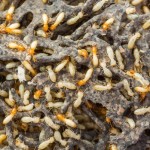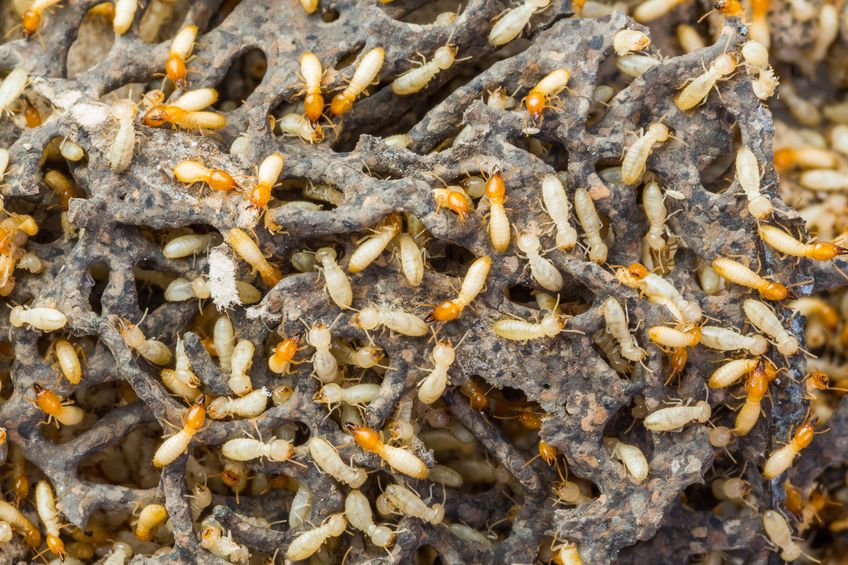Subterranean termites are social insects that live in colonies located beneath the ground, and while they cannot be seen, they are just as ubiquitous in the natural environment as ants. Several subterranean termite species that are known pests of homes can be found in the United States, but the eastern subterranean termite (R. flavipes) is by far the most economically significant species. This is because the eastern subterranean termite is the most widespread termite species in the US, and their cold-hardiness allows them to infest homes located in the northernmost states where homeowners are relatively less prepared to deal with termite infestations. Mature eastern subterranean termite colonies can grow to contain more than one million individual members, most of which are workers that are responsible for foraging, expanding nesting sites, and caring for offspring. While foraging, workers intercept pieces of rotting wood, which they transport back to their colony where they physically feed their nestmates. Occasionally, however, workers encounter and infest structural wood in homes.
Given their cryptic habitat below the ground-surface, not even pest control professionals or entomologists are able to pinpoint the exact location of subterranean termite nests. Occasionally, subterranean termite workers are found infesting dead trees, logs or stumps, which may provide professionals with enough clues to pinpoint the exact location of a colony’s nesting site. However, subterranean termite colonies that have aged more than ten years often inhabit a network of interconnected nests that span an area larger than a football field. These networks are composed of many secondary nests that form a network that surrounds the original primary nest where the queen permanently resides. When it comes to mature colonies such as these, locating the primary nest is next to impossible, and there is no easy way to predict the foraging range surrounding nests. Also, unlike drywood and dampwood termites that dwell within small colonies that nest within a single wood source, subterranean termite nests are diffuse and not clearly defined by borders.
Luckily, pest control professionals are still able to eliminate termite colonies that are located in close proximity to homes by using slow-acting baits. Workers take these baits back to their nest where the slow-acting poison eventually spreads throughout the entire colony. Termiticide barriers are also used to prevent workers from foraging onto properties. Baits and barriers each have advantages and disadvantages, and the control method that is most suitable for a particular property can be determined by a trained pest control professional.
Have you ever suspected a subterranean termite colony of existing on your property?

